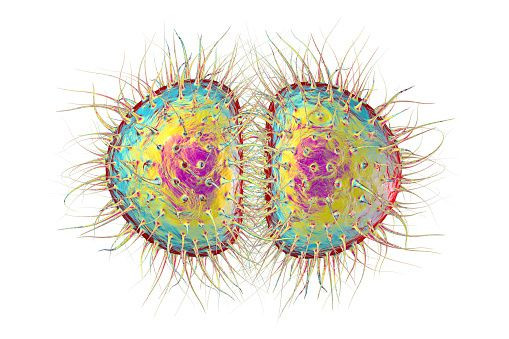What Is Super Gonorrhea? Superbug Not New But Possibly Spreading Because Of COVID-19
KEY POINTS
- Health authorities have been warning about super gonorrhea for years
- The COVID-19 pandemic could influence a rise in super gonorrhea cases, an expert said
- Superbugs are a serious threat to public health
The term "super gonorrhea" trended on Twitter over the weekend. After a pretty tough year, it was no longer surprising that the threat of a new public health issue could gain the attention of people.
However, super gonorrhea isn't exactly new. The World Health Organization (WHO) has been warning about super gonorrhea and other superbugs for quite some time now. The term started trending after a WHO spokesperson told The Sun recently that the overuse of azithromycin for COVID-19 and the lack of proper services for sexually transmitted infections (STI) could lead to a rise in super gonorrhea.
Azithromycin is a common antibiotic that's used to treat bacterial infections including gonorrhea. In the early stages of the pandemic, both azithromycin and hydroxychloroquine were used for treating COVID-19 patients. But just like other antibiotics, their overuse could lead to antibiotic-resistance, which would then make the infection much more difficult, if not impossible, to treat.
So what exactly is super gonorrhea?
WHO's Dr. Teodora Wi said the term "super gonorrhea" refers to "gonorrhea superbug."
"These are extensively drug-resistant gonorrhea with high-level resistance to the current recommended treatment for gonorrhea (ceftriaxone and azithromycin) including resistance to penicillin, sulphonamides, tetracycline, fluoroquinolones, macrolides," she explained in an interview posted on the WHO website.
A super gonorrhea is no longer susceptible to the antibiotics that had previously been effective against it. This is problematic because gonococcal infections such as gonorrhea can lead to health problems including infertility, inflammation, severe neonatal eye infections, ectopic pregnancy and a five-fold increase in HIV transmissions, Dr. Wi noted.
The Centers for Disease Control and Prevention (CDC) recently updated its recommendations, removing azithromycin and suggesting the use of only ceftriaxone for "uncomplicated" gonorrhea.
"We are currently down to one last recommended and effective class of antibiotics, cephalosporins, to treat this common infection," the CDC said, noting that gonorrhea is "skilled" at outsmarting antibiotics. "This is an urgent public health threat because gonorrhea control in the United States largely relies on our ability to successfully treat the infection."
With the COVID-19 pandemic prompting the use of azithromycin and pausing the services for STIs such as gonorrhea, the risk of spreading super gonorrhea also increased. This kind of threat not only applies to super gonorrhea but to other superbugs as well.
For instance, a New Jersey hospital reported a superbug cluster in May amid the surge of COVID-19 cases. At the time, the superbug spread because of the changes in infection prevention practices due to the COVID-19 surge.
"Antibiotic resistance is one of the biggest public health challenges of our time. Each year in the U.S., at least 2.8 million people get an antibiotic-resistant infection, and more than 35,000 people die," the CDC said. "Fighting this threat is a public health priority that requires a collaborative global approach across sectors."
Antibiotic-resistance is just one of the many important issues that are being sidelined because of the COVID-19 pandemic, but it remains to be a threat to public health. And with the pandemic likely fueling the threat of super gonorrhea, it is important to shine a spotlight on the efforts to control these superbugs and protect public health.

© Copyright IBTimes 2025. All rights reserved.






















